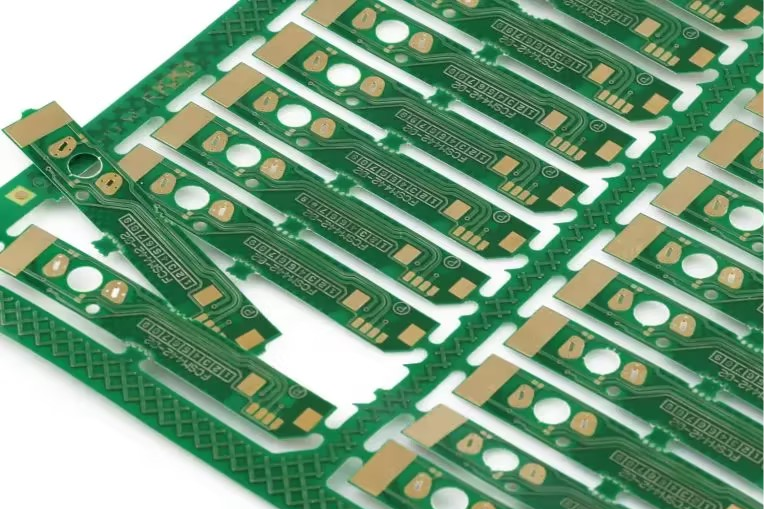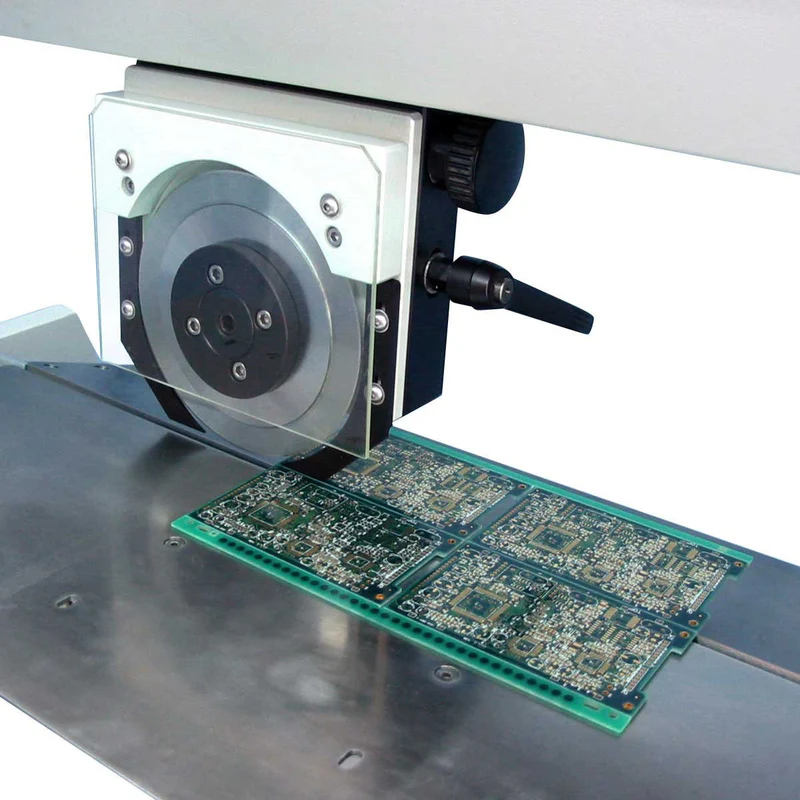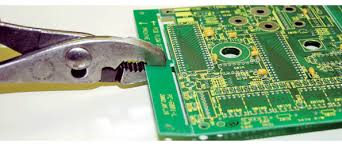When it comes to separating individual printed circuit boards (PCBs) from a larger panel during manufacturing, the choice between automated PCB depaneling and manual breakaway tab removal can significantly impact your production efficiency, cost, and product quality. So, which method is right for you? In short, automated depaneling is ideal for high-volume production with a focus on precision and speed, while manual breakaway tab removal suits low-volume or prototype runs where cost savings are a priority. In this comprehensive guide, we’ll dive deep into both methods, comparing their benefits, drawbacks, equipment needs, costs, and how they fit into PCB manufacturing process optimization. Whether you're an engineer or a production manager, this post will help you make an informed decision.
What is PCB Depaneling, and Why Does It Matter?
PCB depaneling is the process of separating individual circuit boards from a larger panel after assembly. During manufacturing, multiple PCBs are often produced on a single panel to streamline processes like soldering and testing. Once these steps are complete, the boards must be separated for final use. The method you choose for depaneling can affect the quality of the board edges, production speed, and overall cost.
Choosing the right depaneling method is crucial for maintaining the integrity of your PCBs. Rough or imprecise separation can lead to damaged components, microcracks in the board material, or uneven edges that affect functionality. With the rise of complex, high-density PCB designs, precision in depaneling has become more important than ever. Let’s explore the two primary methods—automated PCB depaneling and manual breakaway tab removal—to see how they stack up.

Understanding Automated PCB Depaneling
Automated PCB depaneling uses specialized machinery to separate individual boards from a panel with high precision and speed. This method is commonly employed in high-volume production environments where consistency and efficiency are key. There are several types of automated depaneling equipment, including laser cutting, milling routers, and punch presses, each suited to different PCB materials and designs.
Benefits of Automated PCB Depaneling
- Precision and Quality: Automated systems offer clean, precise cuts with minimal stress on the board. For instance, laser depaneling can achieve edge tolerances as tight as ±0.1 mm, ensuring no damage to nearby components.
- Speed: Automated equipment can process hundreds of panels per hour, making it ideal for large-scale production. A typical CNC router can depanel a panel in under 30 seconds, depending on complexity.
- Consistency: Machines deliver uniform results across thousands of boards, reducing the risk of human error.
- Versatility: Many automated systems can handle various board thicknesses (from 0.6 mm to 3.2 mm) and materials like FR4, aluminum, or flexible substrates.
Drawbacks of Automated PCB Depaneling
- High Initial Cost: The upfront investment for automated depaneling equipment can be substantial. Entry-level machines start at around $10,000, while advanced laser systems can exceed $100,000.
- Setup Time: Programming and calibrating machines for specific panel designs can take hours, which may not be cost-effective for small runs.
- Maintenance: Regular maintenance and potential downtime for repairs add to the operational cost.

Understanding Manual Breakaway Tab Removal
Manual breakaway tab removal involves physically snapping individual PCBs from a panel using pre-designed breakaway tabs, often referred to as "mouse bites." These tabs are small, perforated connections that hold the boards together during manufacturing but are weak enough to be brloken by hand or with simple tools like pliers.
Benefits of Manual Breakaway Tab Removal
- Low Cost: This method requires no expensive equipment, making it a budget-friendly option for small-scale production or prototyping. Basic hand tools, if needed, cost less than $50.
- Simplicity: No complex setup or programming is required. Workers can start separating boards immediately after PCB assembly.
- Flexibility: It’s easy to adapt this method to different panel designs without additional investment.
Drawbacks of Manual Breakaway Tab Removal
- Labor-Intensive: Manually breaking tabs is time-consuming, especially for large volumes. Separating a single panel with 10 boards might take 2-3 minutes per panel.
- Quality Risks: Uneven force during separation can cause stress cracks or jagged edges, potentially damaging components near the break points. Studies suggest that up to 5% of boards separated manually may show minor edge damage.
- Inconsistency: Results vary depending on the worker’s skill, leading to potential quality issues in larger batches.

Cost Comparison: Automated vs. Manual Depaneling
One of the most critical factors in choosing between automated PCB depaneling and manual breakaway tab removal is cost. Let’s break down the cost comparison to help you understand the financial implications of each method.
Upfront Costs
Automated depaneling requires a significant initial investment. A basic manual router table for depaneling might cost around $5,000 to $10,000, while advanced systems like laser cutters can range from $50,000 to over $100,000. In contrast, manual breakaway tab removal has virtually no upfront cost beyond the design of the panel itself, which may include a small fee for adding mouse bites during fabrication (typically less than $100 per design).
Operational Costs
Operational costs for automated systems include electricity, maintenance, and occasional replacement of parts like cutting bits or laser optics. For a mid-range CNC router, annual maintenance might cost $1,000 to $3,000, with power consumption adding another $500 per year. On the other hand, manual depaneling primarily involves labor costs. If a worker earning $20 per hour can process 20 panels per hour, the labor cost per panel is about $1. For higher volumes, this cost accumulates quickly.
Long-Term Savings
For high-volume production (e.g., 10,000 panels per month), automated depaneling often becomes more cost-effective due to reduced labor costs and faster processing times. A machine that costs $50,000 upfront might save $20,000 annually in labor compared to manual methods. However, for low-volume runs (e.g., 100 panels per month), manual breakaway tab removal remains cheaper since the equipment cost outweighs any labor savings.
Impact on PCB Manufacturing Process Optimization
Optimizing the PCB manufacturing process is about balancing speed, cost, and quality. The depaneling method you choose plays a significant role in this equation. Let’s look at how each method contributes to or hinders process optimization.
Speed and Throughput
Automated PCB depaneling excels in high-speed production environments. Machines can operate continuously with minimal downtime, processing panels at a rate of 100 to 500 per hour, depending on the equipment. This speed is essential for meeting tight deadlines in industries like consumer electronics. Manual breakaway tab removal, however, is much slower, often limited to 20-30 panels per hour per worker. For large orders, this can create bottlenecks in the production line.
Quality Control
Quality is a top priority in PCB manufacturing, especially for applications in medical devices or aerospace where reliability is critical. Automated depaneling ensures consistent, high-quality separation with minimal risk of damage. Laser systems, for instance, produce smooth edges with no mechanical stress, preserving the structural integrity of the board. Manual methods, while sufficient for less critical applications, carry a higher risk of edge roughness or microcracks, which could affect long-term performance.
Scalability
As your production needs grow, automated systems offer better scalability. Adding a second machine or upgrading to a faster model can significantly boost output. Manual methods, however, require hiring and training more workers, which introduces variability and increases costs over time. For businesses planning to scale, investing in automated depaneling equipment may be a strategic move.
How to Choose the Right Method for Your Needs
Deciding between automated PCB depaneling and manual breakaway tab removal depends on several factors specific to your production environment. Here are some key considerations to guide your choice:
- Production Volume: If you’re producing thousands of panels monthly, automated depaneling is likely the better choice due to its speed and cost-efficiency at scale. For small runs or prototypes (under 500 panels), manual methods are more economical.
- Budget: If upfront costs are a concern, manual breakaway tab removal allows you to get started without significant investment. However, consider long-term savings if you anticipate growth.
- Quality Requirements: For high-reliability applications where edge quality and component safety are non-negotiable, automated depaneling offers superior results.
- Board Complexity: Complex designs with tight component placement near edges benefit from the precision of automated systems. Simpler boards with ample clearance can often be handled manually without issues.
Suggested Reading: V-Scoring vs. Stamp Hole Depaneling: Choosing the Right Method for Your PCB
Hybrid Approaches for Flexibility
In some cases, a hybrid approach might be the best solution. For instance, you could use manual breakaway tab removal for early prototypes to save costs during the design phase, then switch to automated depaneling for mass production to ensure quality and speed. Some manufacturers also combine methods by using automated scoring to pre-weaken breakaway tabs, making manual separation easier and less risky. This hybrid strategy can offer the best of both worlds, balancing cost and quality based on project needs.
Future Trends in PCB Depaneling
As technology advances, the landscape of PCB depaneling continues to evolve. Laser depaneling, for example, is becoming more accessible as equipment costs decrease, offering unparalleled precision for ultra-thin or flexible PCBs. Additionally, automation technologies like robotic arms are being integrated into depaneling systems, further reducing human intervention and boosting efficiency. Staying informed about these trends can help you future-proof your manufacturing process and maintain a competitive edge.
Suggested Reading: The Future of PCB Depaneling: Emerging Trends and Technologies
Conclusion: Making an Informed Decision
Choosing between automated PCB depaneling and manual breakaway tab removal comes down to understanding your specific needs in terms of volume, budget, quality, and scalability. Automated methods shine in high-volume, high-precision scenarios, offering speed and consistency at the cost of a higher initial investment. Manual methods, on the other hand, provide a low-cost, flexible solution for smaller runs or less critical applications, though they carry risks of quality issues and slower processing times.
By carefully evaluating the cost comparison of automated vs. manual depaneling and considering how each method fits into your PCB manufacturing process optimization goals, you can select the approach that best aligns with your production strategy. Whether you opt for cutting-edge automation or stick with tried-and-true manual techniques, the right choice will help you deliver high-quality PCBs efficiently and cost-effectively.
At ALLPCB, we’re committed to supporting your manufacturing journey with solutions tailored to your unique requirements. Explore our resources and services to streamline every step of your PCB production, from design to final assembly.
 ALLPCB
ALLPCB







